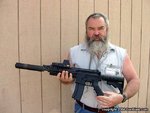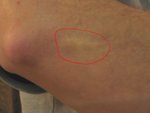lesofprimus
Brigadier General
I heard about this conversion pack from a Teammate of mine....
The race to replace the M-16/M-4 family of rifles is on -- and Barrett has its own worthy contender in the M468 rifle, which features an improved, more powerful 6.8mm cartridge.
Killer Features:
Firepower: Rifle uses 6.8mm cartridge which has 50% more stopping power than the M-16's 5.56mm cartridge
Ease of adaptability: Selective Integration Rail (S.I.R.) hand guard allows all existing military night vision devices, combat optics, and weapon accessories to be mounted on rifle, without need for adjustments
For 40 years, the M-16/M-4 rifle family has reigned as the U.S. military's standard-issue battle rifle. Any gun manufacturer that wants to tackle that stranglehold must also take on the legacy issues that have plagued the M-16/M-4 series over the years: maintenance and reliability issues, overheating (especially in the M-4s), and the less than stellar stopping power and penetrating capabilities of the Remington .223 (5.56mm NATO) cartridge these rifles shoot.
In a previous SoldierTech article we had a sneak preview of one challenger to the M-16/M-4's throne, the Heckler and Koch XM-8. It did away with many of the problems noted above, although it still uses the same Remington .223 cartridge that the current M-16/M-4 rifle uses. That left an opening for the Murfreesboro, Tennessee arms manufacturer, Barrett Firearms Manufacturing, Inc. Barrett has joined the fray with the introduction of the 6.8mm M468 rifle, a sturdy challenger to the XM-8.
Barrett's aim is to eliminate the M-16/M-4's weaknesses while retaining its strengths -- in short, improve the rifle's combat characteristics, but also simplify operator transition to the new weapon, and reduce maintenance and acquisition costs.
A rifle such as the M-16 can be divided into two major components: the upper and lower receivers. The upper receiver houses all of the firing components of the rifle: the bolt assembly, the barrel, chamber, and the gas operating tube, as well as any iron sights or attached optics. The lower receiver forms the "user interface" portion of the rifle, incorporating the butt stock, magazine well, trigger assembly and handgrip. In the M-16's case, all of its operational problems are associated with the upper receiver. Consequentially, the Barrett M468 is essentially a new and improved upper receiver mated to an existing M-16/M-4 series lower receiver (there is no need to buy a complete weapon).
The core component of the Barrett M468 is Remington's new 6.8mm SPC (Special Purpose Cartridge). Indeed, the rifle's name comes from the combination of M4 and 6.8mm. Introduced by Remington Arms in 2004, the 6.8mm (.270 caliber) SPC is more lethal than the 5.56mm cartridge, without a significant increase in overall bullet dimensions. Though slightly larger than the standard M-16 cartridge (6.8x43mm as opposed to 5.56x45mm), current issue M-16 magazines can easily be reconfigured to accept the new cartridge. In addition, while the SPC has a slightly lower muzzle velocity than the 5.56mm cartridge, its larger mass makes it ballistically similar to the lighter 5.56mm round (in terms of accuracy and bullet drop), and it delivers half again as much kinetic energy. In real terms, this means that the 6.8mm SPC has the same relative trajectory as the 5.56mm (which allows for the M468 to be fired and treated essentially like a 5.56mm M-16), but with 50% more stopping power, and a bullet speed of 2650 feet per second from a sixteen and one-half inch barrel, delivering 1715 foot-pounds of energy, with a six hundred meter effective range.
Flexibility is also the watchword with the M468, as it employs the ARMS Inc. S.I.R. (Selective Integration Rail) hand guard, which allows all existing military night vision devices, combat optics, and weapon accessories (such as bipods) to be mounted on it. The SIR system not only reduces the integration costs of the weapon (there is no need to purchase new optics specifically tailored to the weapon), but also gives the military the ability to selectively field the weapon and its systems. For example, every Heckler Koch XM-8 requires an integrated electro-optical combat sight, whereas the Barrett M468 can be issued as a stand-alone weapon (the SIR system comes with integrated "flip up" style iron sights), with optional items such as the M68 CCO, PAC-4 and PEQ-2 issued to units based on their MTOE (Modified Table of Organization and Equipment) and operational readiness level (Active Component forces have a higher OR level than National Guard formations, for example).
The SIR system allows for the rapid integration of the core system (the M468) into all levels of the military, while distribution of auxiliary systems (such as optics and night vision devices) could be based on unit need and budgetary considerations. In addition, the M468 should be completely adaptable (through the use of modified hand guards) for use with existing secondary weapons, such as the M203 40mm grenade launcher (which has been a standard issue, squad level weapon for the last 20 years) and the 12 gauge LSS under-barrel shotgun. The ability to mount these pre-existing weapons means that new weapons (such as the 40mm launcher that would be used with the XM-8) wouldn't need to be purchased as additional items.
Simply put, the greatest advantage the Barrett M468 has over contenders such as the H&K XM-8 is improved lethality. By going to the more powerful Remington 6.8mm SPC, Barrett has produced a rifle that is more lethal than any other battle rifle chambered for 5.56mm NATO, yet does not suffer from a significant loss in magazine capacity (as would have been the case if the rifle had been chambered for the much larger 7.62mm NATO cartridge). By going to a heavier bolt carrier group and stiffer recoil spring, Barrett has also addressed the one unresolved legacy issue regarding the M-16s reliability under combat conditions. These two factors, coupled with its compatibility with existing M-16 accessories and attachments, would seem to make it the hands-down favorite to replace the M-16.
Barrett M468 Specifications
Caliber:
Remington 6.8mm SPC
Overall Length:
35.4 inches (stock extended)
32 inches (stock retracted)
Barrel Length:
16 inches (chrome-lined)
Rate of Twist:
6 groove, one-in-10 inch RHT
Sighting System:
Folding Front Sight and Gas Block
Price:
Retail Price: $2,535
Upper Conversion Kit Price: $1,494
Weight:
7.3 lbs
Muzzle Velocity:
2600 feet per second
Magazine Capacity:
5, 10 and 28 Round Magazine Configurations
Operation:
Semi-Automatic, Gas Operated,
Dual Spring Extractor System, Muzzle Brake, Two-Stage Trigger
The race to replace the M-16/M-4 family of rifles is on -- and Barrett has its own worthy contender in the M468 rifle, which features an improved, more powerful 6.8mm cartridge.
Killer Features:
Firepower: Rifle uses 6.8mm cartridge which has 50% more stopping power than the M-16's 5.56mm cartridge
Ease of adaptability: Selective Integration Rail (S.I.R.) hand guard allows all existing military night vision devices, combat optics, and weapon accessories to be mounted on rifle, without need for adjustments
For 40 years, the M-16/M-4 rifle family has reigned as the U.S. military's standard-issue battle rifle. Any gun manufacturer that wants to tackle that stranglehold must also take on the legacy issues that have plagued the M-16/M-4 series over the years: maintenance and reliability issues, overheating (especially in the M-4s), and the less than stellar stopping power and penetrating capabilities of the Remington .223 (5.56mm NATO) cartridge these rifles shoot.
In a previous SoldierTech article we had a sneak preview of one challenger to the M-16/M-4's throne, the Heckler and Koch XM-8. It did away with many of the problems noted above, although it still uses the same Remington .223 cartridge that the current M-16/M-4 rifle uses. That left an opening for the Murfreesboro, Tennessee arms manufacturer, Barrett Firearms Manufacturing, Inc. Barrett has joined the fray with the introduction of the 6.8mm M468 rifle, a sturdy challenger to the XM-8.
Barrett's aim is to eliminate the M-16/M-4's weaknesses while retaining its strengths -- in short, improve the rifle's combat characteristics, but also simplify operator transition to the new weapon, and reduce maintenance and acquisition costs.
A rifle such as the M-16 can be divided into two major components: the upper and lower receivers. The upper receiver houses all of the firing components of the rifle: the bolt assembly, the barrel, chamber, and the gas operating tube, as well as any iron sights or attached optics. The lower receiver forms the "user interface" portion of the rifle, incorporating the butt stock, magazine well, trigger assembly and handgrip. In the M-16's case, all of its operational problems are associated with the upper receiver. Consequentially, the Barrett M468 is essentially a new and improved upper receiver mated to an existing M-16/M-4 series lower receiver (there is no need to buy a complete weapon).
The core component of the Barrett M468 is Remington's new 6.8mm SPC (Special Purpose Cartridge). Indeed, the rifle's name comes from the combination of M4 and 6.8mm. Introduced by Remington Arms in 2004, the 6.8mm (.270 caliber) SPC is more lethal than the 5.56mm cartridge, without a significant increase in overall bullet dimensions. Though slightly larger than the standard M-16 cartridge (6.8x43mm as opposed to 5.56x45mm), current issue M-16 magazines can easily be reconfigured to accept the new cartridge. In addition, while the SPC has a slightly lower muzzle velocity than the 5.56mm cartridge, its larger mass makes it ballistically similar to the lighter 5.56mm round (in terms of accuracy and bullet drop), and it delivers half again as much kinetic energy. In real terms, this means that the 6.8mm SPC has the same relative trajectory as the 5.56mm (which allows for the M468 to be fired and treated essentially like a 5.56mm M-16), but with 50% more stopping power, and a bullet speed of 2650 feet per second from a sixteen and one-half inch barrel, delivering 1715 foot-pounds of energy, with a six hundred meter effective range.
Flexibility is also the watchword with the M468, as it employs the ARMS Inc. S.I.R. (Selective Integration Rail) hand guard, which allows all existing military night vision devices, combat optics, and weapon accessories (such as bipods) to be mounted on it. The SIR system not only reduces the integration costs of the weapon (there is no need to purchase new optics specifically tailored to the weapon), but also gives the military the ability to selectively field the weapon and its systems. For example, every Heckler Koch XM-8 requires an integrated electro-optical combat sight, whereas the Barrett M468 can be issued as a stand-alone weapon (the SIR system comes with integrated "flip up" style iron sights), with optional items such as the M68 CCO, PAC-4 and PEQ-2 issued to units based on their MTOE (Modified Table of Organization and Equipment) and operational readiness level (Active Component forces have a higher OR level than National Guard formations, for example).
The SIR system allows for the rapid integration of the core system (the M468) into all levels of the military, while distribution of auxiliary systems (such as optics and night vision devices) could be based on unit need and budgetary considerations. In addition, the M468 should be completely adaptable (through the use of modified hand guards) for use with existing secondary weapons, such as the M203 40mm grenade launcher (which has been a standard issue, squad level weapon for the last 20 years) and the 12 gauge LSS under-barrel shotgun. The ability to mount these pre-existing weapons means that new weapons (such as the 40mm launcher that would be used with the XM-8) wouldn't need to be purchased as additional items.
Simply put, the greatest advantage the Barrett M468 has over contenders such as the H&K XM-8 is improved lethality. By going to the more powerful Remington 6.8mm SPC, Barrett has produced a rifle that is more lethal than any other battle rifle chambered for 5.56mm NATO, yet does not suffer from a significant loss in magazine capacity (as would have been the case if the rifle had been chambered for the much larger 7.62mm NATO cartridge). By going to a heavier bolt carrier group and stiffer recoil spring, Barrett has also addressed the one unresolved legacy issue regarding the M-16s reliability under combat conditions. These two factors, coupled with its compatibility with existing M-16 accessories and attachments, would seem to make it the hands-down favorite to replace the M-16.
Barrett M468 Specifications
Caliber:
Remington 6.8mm SPC
Overall Length:
35.4 inches (stock extended)
32 inches (stock retracted)
Barrel Length:
16 inches (chrome-lined)
Rate of Twist:
6 groove, one-in-10 inch RHT
Sighting System:
Folding Front Sight and Gas Block
Price:
Retail Price: $2,535
Upper Conversion Kit Price: $1,494
Weight:
7.3 lbs
Muzzle Velocity:
2600 feet per second
Magazine Capacity:
5, 10 and 28 Round Magazine Configurations
Operation:
Semi-Automatic, Gas Operated,
Dual Spring Extractor System, Muzzle Brake, Two-Stage Trigger
Attachments
-
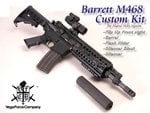 m468_400x300_136.jpg20.1 KB · Views: 421
m468_400x300_136.jpg20.1 KB · Views: 421 -
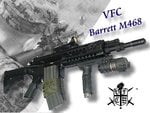 m468_model1_3_128.jpg25.8 KB · Views: 1,061
m468_model1_3_128.jpg25.8 KB · Views: 1,061 -
 m468-2_127.jpg8.2 KB · Views: 285
m468-2_127.jpg8.2 KB · Views: 285 -
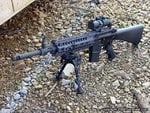 m468_179.jpg128 KB · Views: 252
m468_179.jpg128 KB · Views: 252 -
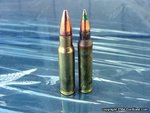 m468_6.8_vs_5.56_145.jpg46.5 KB · Views: 288
m468_6.8_vs_5.56_145.jpg46.5 KB · Views: 288 -
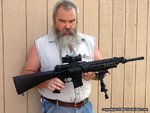 m468a_131.jpg55.9 KB · Views: 417
m468a_131.jpg55.9 KB · Views: 417 -
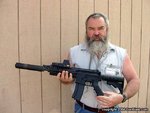 m468b_131.jpg52.5 KB · Views: 272
m468b_131.jpg52.5 KB · Views: 272 -
 m468-1_138.jpg17.4 KB · Views: 317
m468-1_138.jpg17.4 KB · Views: 317



